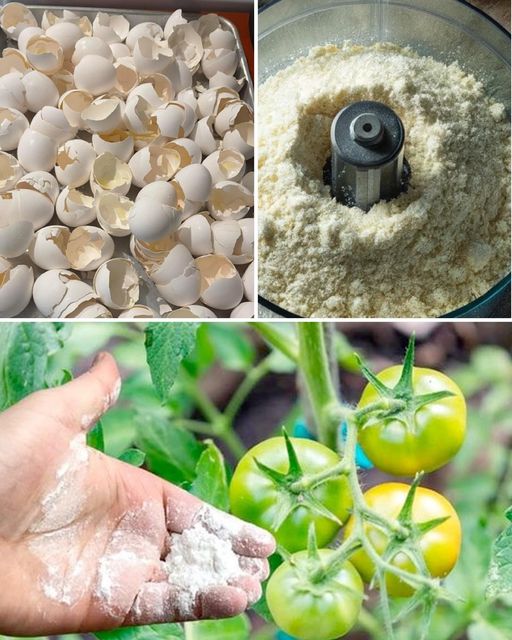Eggshells are a valuable resource in gardening due to their high calcium content, which can help improve soil quality and plant health. Here’s how to prepare and use crushed eggshells effectively in your garden.
Materials Needed
- Used eggshells
- Mortar and pestle or a blender
- A baking tray or plate
- Storage container
- Garden gloves
Preparation Steps
- Collect and Clean the Eggshells:
- Rinse the eggshells thoroughly to remove any remaining egg white or yolk. This helps prevent attracting pests and reduces the risk of bacteria.
- Dry the Eggshells:
- Spread the cleaned eggshells on a baking tray or plate.
- Allow them to air dry for a few days, or bake them in an oven at a low temperature (around 200°F or 93°C) for about 10 minutes to speed up the process.
- Crush and Powder the Eggshells:
- Once dried, crush the eggshells into smaller pieces using a mortar and pestle or a blender. The finer the powder, the more easily the calcium will be absorbed by the soil.
Application Methods
- Soil Amendment:
- How to Use: Mix the crushed eggshells into the soil before planting. This enriches the soil with calcium, which is essential for the growth of healthy roots and prevents issues like blossom-end rot in tomatoes.
- Benefits: Improves soil structure, increases nutrient availability, and provides a slow-release calcium source.
- Pest Deterrent:
- How to Use: Sprinkle crushed eggshells around the base of plants like tomatoes, cucumbers, and peppers. The sharp edges can deter soft-bodied pests such as slugs and snails.
- Benefits: Acts as a physical barrier to protect plants from pests.
- Compost Booster:
- How to Use: Add finely crushed eggshells to your compost pile. They decompose and add calcium to the compost, enriching it further.
- Benefits: Enhances the nutritional value of compost, which in turn benefits all plants in your garden.
- Seedling Starter Pots:
- How to Use: Use half eggshells as small pots for starting seedlings. Fill them with soil and plant your seeds. When it’s time to transplant, crush the shell slightly to allow roots to escape and plant the whole shell in the ground.
- Benefits: Provides a biodegradable container that adds nutrients to the soil as it decomposes.

- Direct Plant Fertilizer:
- How to Use: Sprinkle the powdered eggshells directly onto the soil around established plants like tomatoes, peppers, and cucumbers. Water the plants after applying the eggshell powder to help it integrate into the soil.
- Benefits: Directly provides calcium to the plants, supporting strong cell wall development and overall plant health.
Specific Plant Benefits
- Tomatoes:
- Prevents Blossom-End Rot: Calcium deficiency is a common cause of blossom-end rot in tomatoes. Incorporating eggshells can mitigate this issue.
- Peppers:
- Improves Fruit Development: Like tomatoes, peppers benefit from the added calcium, which supports the development of healthy fruits.
- Cucumbers:
- Enhances Growth: The additional calcium from eggshells helps in the robust growth of cucumber plants, leading to better yields.

Conclusion
By utilizing crushed eggshells in your garden, you can improve soil quality, enhance plant health, and deter pests naturally. This sustainable practice not only recycles kitchen waste but also supports a thriving garden ecosystem. Always ensure to prepare the eggshells properly and apply them in a way that maximizes their benefits to your plants.
